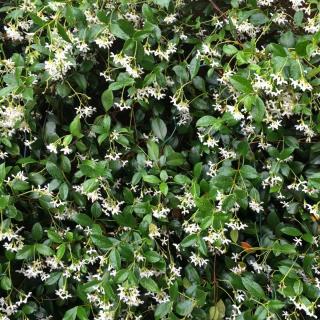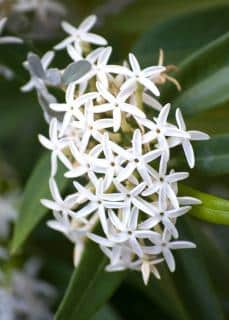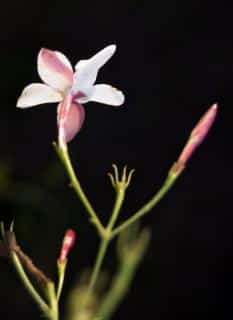

Jasmine and its fragrant smell are enchanting. Here is what you need to know about jasmine and tips on caring for it to get beautiful blooms.
Major Jasmine facts
Name – Jasminum officinalis
Family – Oleaceae
Type – shrub, vine, indoor plant
Height – 6 to 32 feet (2 to 10 m) (outdoors)
Exposure – full sun, part sun
Soil – ordinary
Foliage – deciduous or evergreen – Flowering – Spring
Read also:
There are many species of jasmine, some of them more adapted to indoor and potted cultivation, others better adapted to being outdoors.
Unless you climate zone has very mild winters, this jasmine needs to be grown in pots so that it may be brought indoors to a well-lit room that doesn’t freeze, like a lean-in or an unheated greenhouse.
Spanish jasmine is much less hardy than common jasmine (Jasminum officinale): 21°F (-6°C) versus 5°F (-15°C).
It is fitting to plant jasmine alongside a lattice, pergola or any other structure that can support its growth as a vine.

Jasmine is considered to be an easy plant to grow once it is properly settled in.
Pruning jasmine is easy and, as plants go, jasmine isn’t afraid of being cut back regularly. This pruning helps keep jasmine dense and bushy, and also spurs blooming and abundant flowers.
Maintenance pruning is recommended regularly (dead branches, general shaping).
Depending on the climate, your jasmine may lose some or all of its leaves over the winter, this normal.
In pots, it is good to water when the soil is dry, regularly but without drenching it.
A thick mulch helps save on watering and keeps the soil cool.
Adding fertilizer in spring and summer is a good practice, more or less twice a month.
White jasmine or Jasminum officinale or again common jasmine is a climbing vine that is native to the base of the Himalayas. It is generally cultivated in countries with mild climates.
Its flexible stems carry evergreen leaves and its large white flowers spread an exceptionally delicate fragrance, especially in the evening. Jasmine belongs to the Oleaceae family.

Native to Asia, it has only been grown in Europe since the end of the 19th century.
Its strongly scented flowering appears at the end of the winter and the plant stands out with its magnificent dark green foliage.
There are two types of jasmine: winter jasmine bearing yellow flowers and summer jasmine which has white or pink flowers.
Remarkably, winter jasmine is the only vine that carries flowers during winter, which are yellow and very beautiful.
Chronicles from the past note that François-Joseph Cazin, a noted medicinal herb doctor from the 19th century, recommended jasmine against headaches and migraines.
The name “Jasmine” comes from ancient Persia, in the Middle-East. Originally pronounced “Yasmin”, it was first used in Old French and then spread to Old English.
The meaning of the word is “Gift of God“. It’s a very fitting name, not only for the heavenly-scented flower but also for the many beautiful young ladies given that name upon birth!

Jasmine infusion – ⅔ oz (20 g) of flowers for 1 quart (1 liter) of water. Drink 2 cups a day, and one more just before sleeping. It’s delicious!
Press down leaves in a container, and cover with twice the pressed volume in olive oil. Macerate for at least one month and use for friction and rubbing.
In perfume, jasmine essential oil is extracted thanks to a process called “enfleurage”, wherein pressing together flowers and odor-less fatty substances transfers the fragrance over. It is a very costly essential oil.
Read also:
Summer jasmine is perfect for pergolas and gazebos where one can relax at the end of a long day, because its fragrant smell will enchant you from early spring!
Credits for images shared to Nature & Garden (all edits by Gaspard Lorthiois):
LifeCollectionPhotography/shutterstock
Cluster of Jasmine by Ken Bosma under © CC BY 2.0
Jasmine hedging by Laurence Simon under © CC BY 2.0
Jasmine close-up by peribanyez under © CC BY-SA 2.0
Your comment is awaiting moderation.
this is helpful